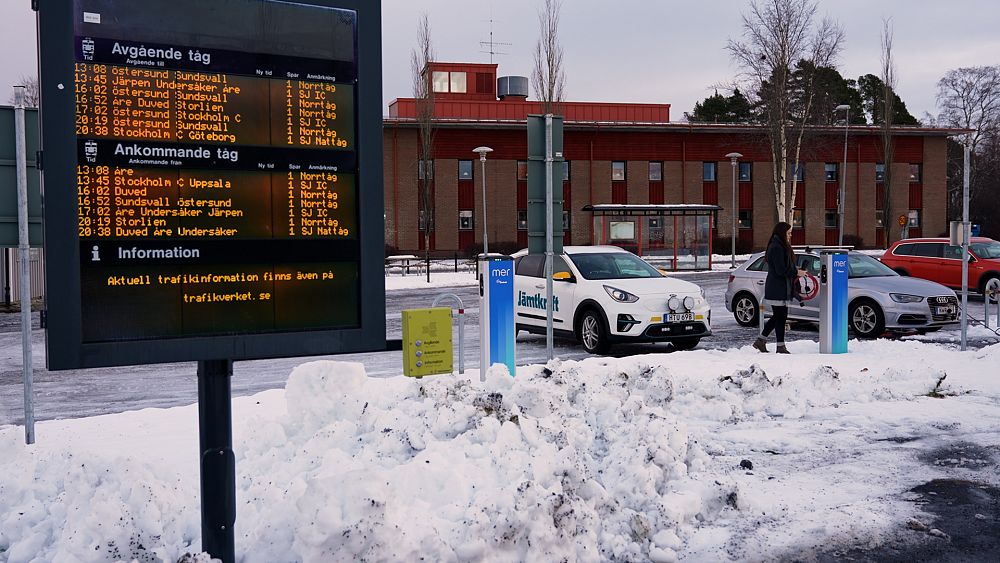
Mittstråket, literally “the middle road”, is one of Sweden’s most important roads – providing an east/west corridor towards Norway.
It’s a snow-white road in the winter months, but a European project is aiming to make it “green” all year round.
Promoting mixed transport
How? By increasing the number of electric vehicle charging points – at all train stations along the route. The aim is to promote mixed transport and reduce the carbon emissions produced by passenger transport.
Business developer Jimmy Anjevall uses it from time to time.
“When I’m travelling it’s nice to be able to charge the car during my stay in the city,” he says. “It’s a little bit more expensive if I compare it to charging at home but it’s not that expensive. It’s €0,29 per kilowatt-hour.”
These terminals work with a badge – or an application that indicates in real-time what charging points are available and their location.
Serving sparsely populated areas
The Ladda i Mittstråket project has a budget of a little over €800,000 – of which half is financed by the European Cohesion Policy.
The County administrative board in Jämtland and in Västernorrland are financing the majority of the other half, with Jämtkraft and Sundsvall Energi also financing a part of their investments (approximately 7%).
There are 85 charging stations planned for more than 200,000 potential users who live along the 358 kilometre stretch between Sundsvall and Storlien.
Sweden boasts the largest number of electric vehicles in the European Union. The project aims to ensure even those living in sparsely populated areas have access to charging points.
“The train and the public transportation is good here, but it’s sometimes difficult to reach your end destination with public transport,” says Ladda i Mittstråket project manager Henrietta Philp. “So you might need a car. We want to give people here equal opportunities to own and use an electric vehicle just as you would anywhere else in Sweden, where it’s more populated than here.”
Difficult weather conditions are not the only challenge
The installation of the charging points started in January 2021 and should be completed this year. In Åre, teams work when the weather allows them to. But the weather isn’t the only challenge. Caroline Hildahl from Jämtkraft Strategi is one of the project managers.
“I’d say that the main challenges in this type of project are, firstly, coordinating several different parallel processes with property owners, the grid company, the national transportation authorities that own the roads,” she says. “And we have one cultural heritage site, so that has to be taken into consideration.”
Mittstråket aims to be a priority corridor for regional and international transport by 2030.